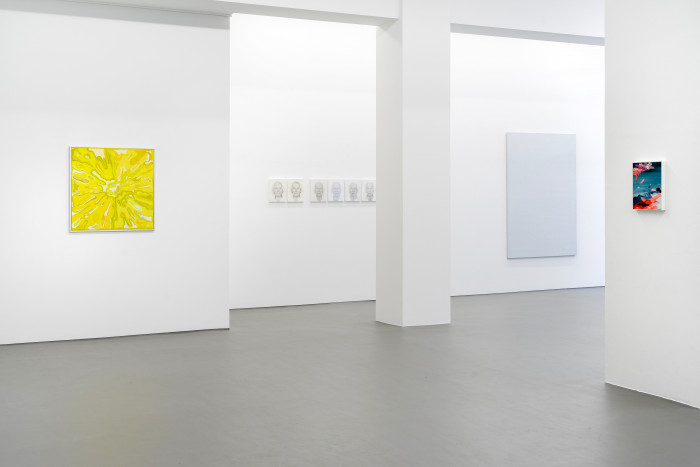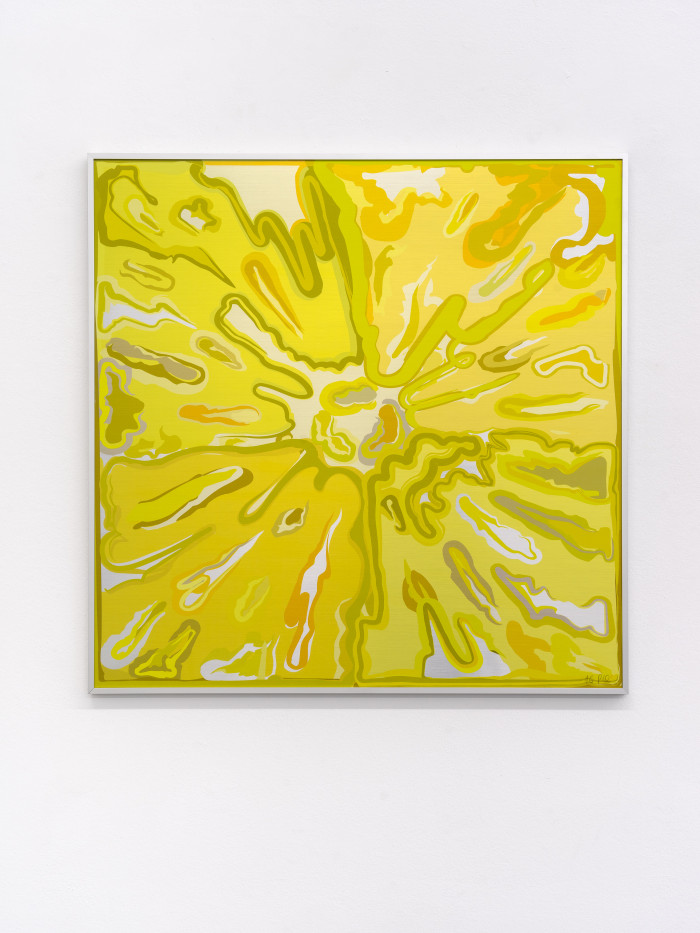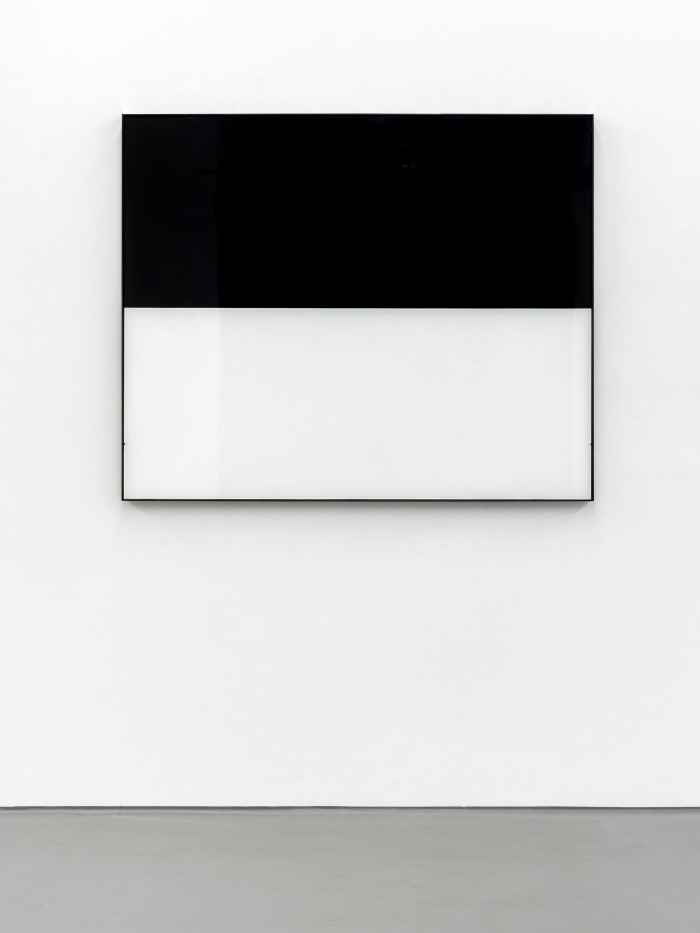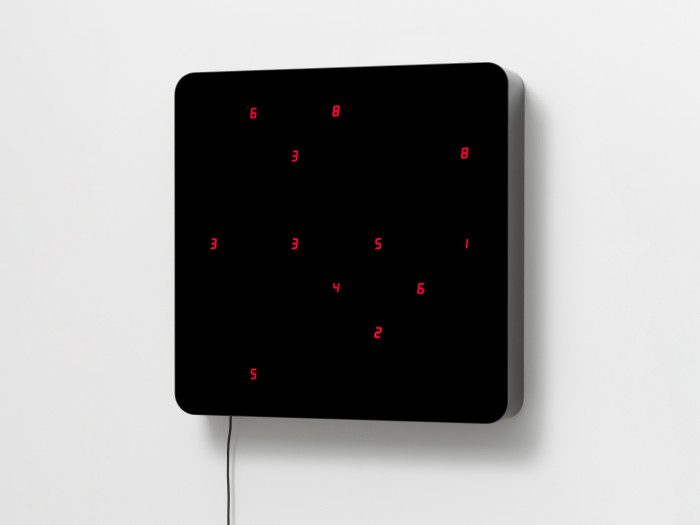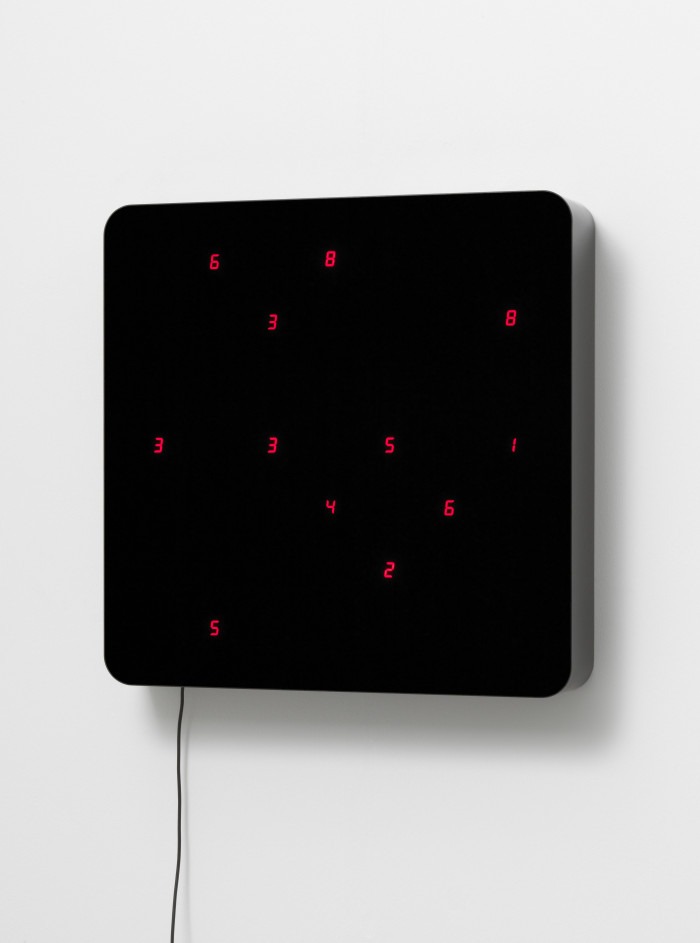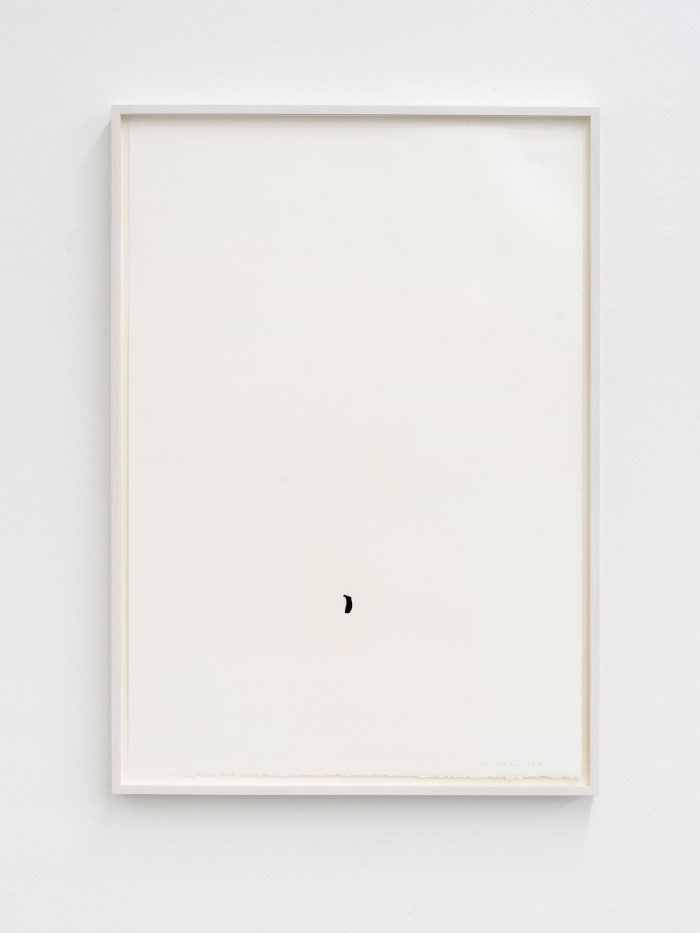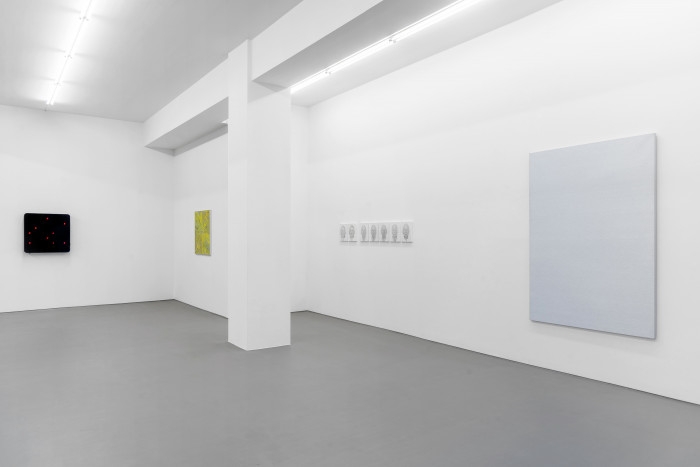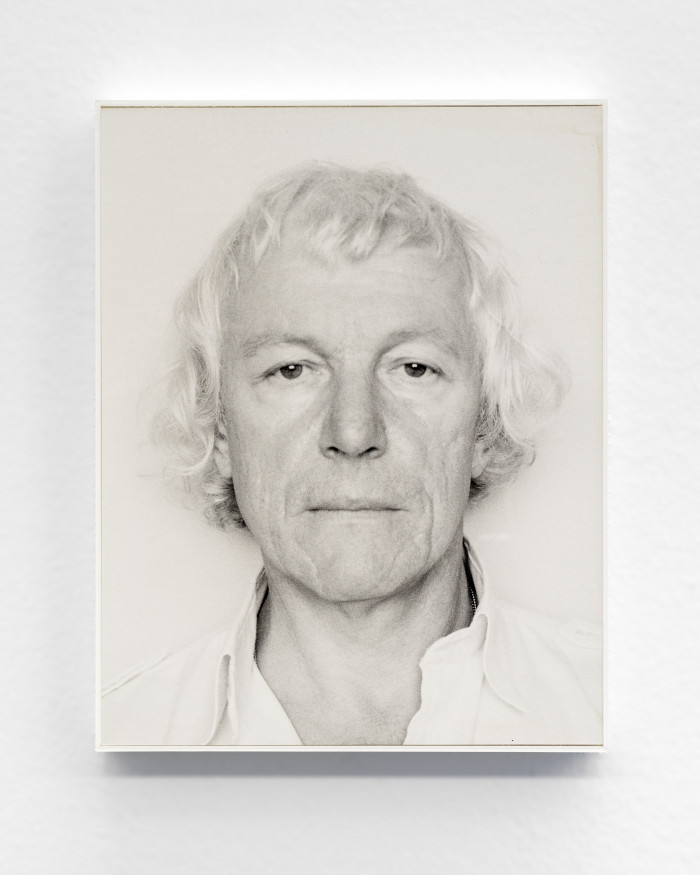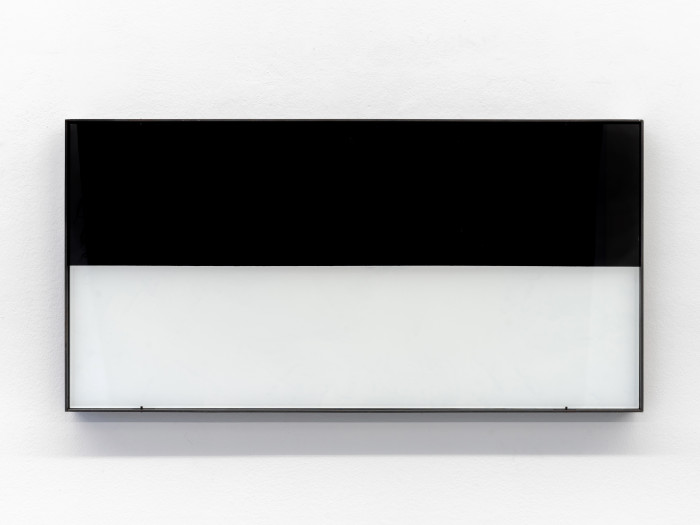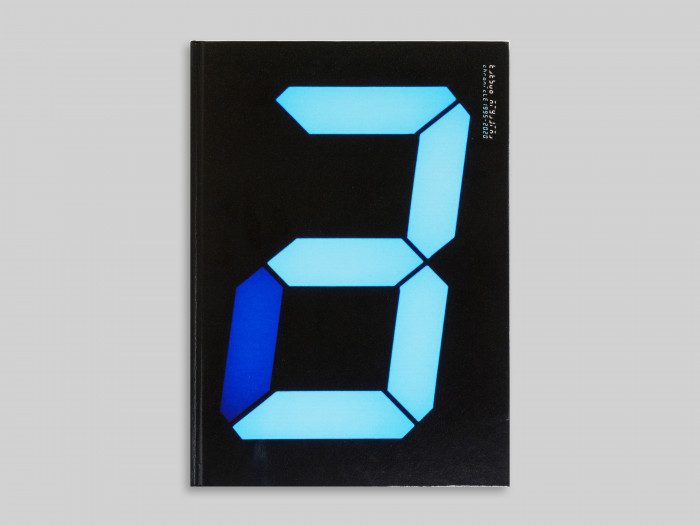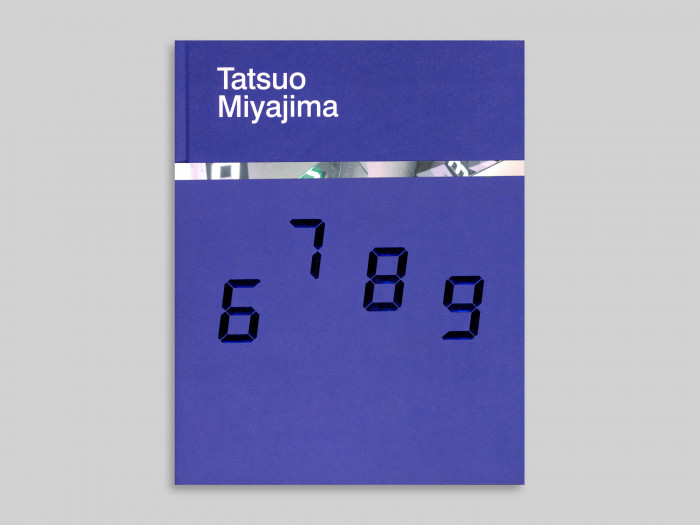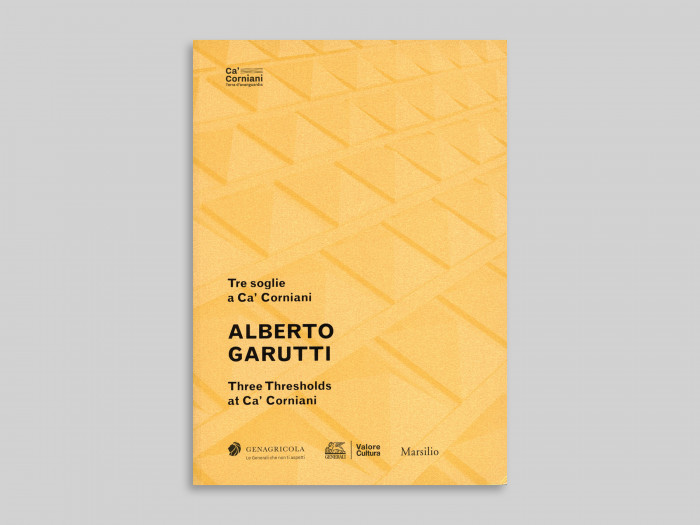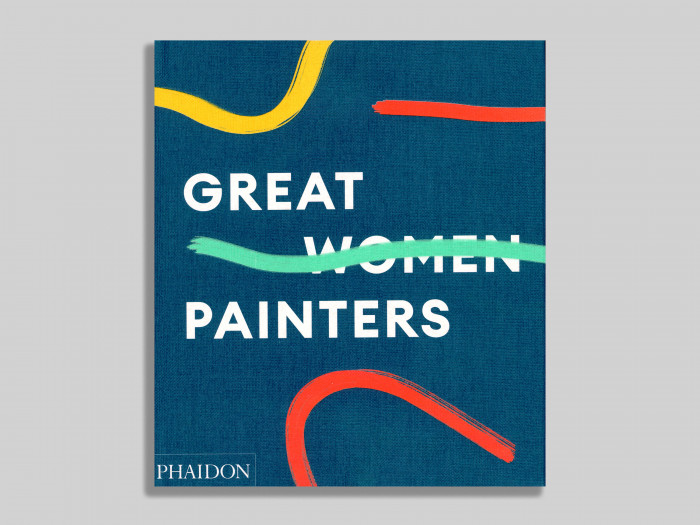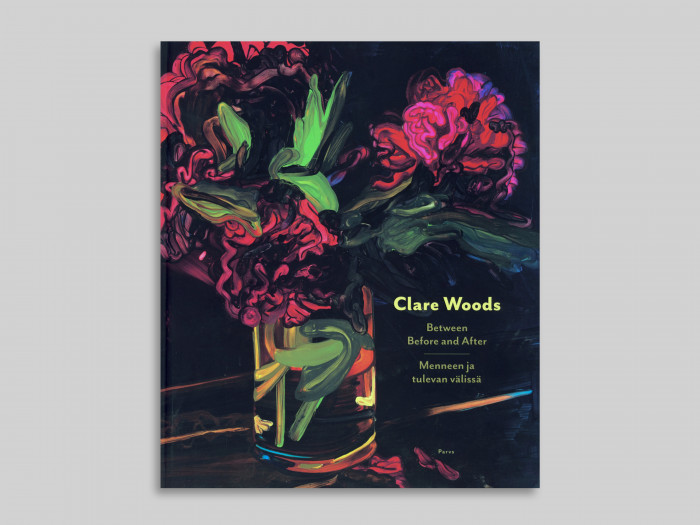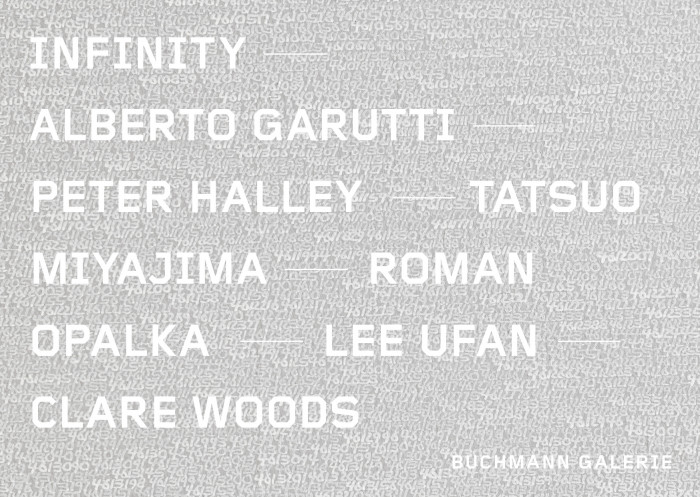
Infinity Alberto Garutti-Peter Halley-Tatsuo Miyajima-Roman Opalka-Lee Ufan-Clare Woods
The concept of infinity is applied to phenomena that transcend the quantifiable, where our systems of measurability no longer provide accurate information. At this point we enter a realm where the purely metric crosses over with the transcendent, with the spiritual and philosophically speculative. Artistic creation often emerges along this line - from clear localisation to ephemeral appearance. The works of the artists in the exhibition can all be related - in one way or another - to the concept of infinity.
Thus, the notion of the end point of the measurable, and a possible beginning of infinity, appears in the work Orizzonte by Alberto Garutti (1948, Galbiate, IT). Each work in the series Orizzonte, begun in 1987, has an everlasting relationship with the name of its owner in the title of the work, and thus continues to write itself. "When I design a new horizon, I always imagine the straight line leaving my studio, entering the homes of collectors and joining the others to construct the 'ideal' horizon of my life, the union of all those who love and support my work," says the artist. The sharp horizontal division into a white and a black surface, in which the surrounding space is reflected, creates an association of infinite space behind the line of the horizon.
In 1965, the French-born Polish artist Roman Opałka made a fundamental artistic decision that would henceforth determine the rest of his life and work. He decided to paint numbers from one to infinity for the duration of his life, progressing from one canvas to the next. Using a fine brush, starting with a small "1" in the upper left corner of a black canvas measuring 195 x 135 cm, the artist continued to paint neat rows of tiny consecutive numbers from one side of the canvas to the other. By the time he reached the lower right corner, he had reached the number 35,327. The next painting then began with this number, etc. From 1971 onwards, Opalka began to make the ground colour of the canvas 1% whiter with each new painting. At the time of his death in August 2011, Opalka's decade-long count had reached 5,607,249. Over the course of 46 years, 233 canvases were created. Opalka contrasts the paintings with his photographic portrait, which he took of himself with the same expression over and over again. These photographs impressively document the changeability of all being.
Tatsuo Miyajima's (*1957, Tokyo) work Life (ku wall) consists of numerical displays made of light-emitting diodes (LEDs) that light up in a black square object at unpredictable speeds and positions. The numbers 1-9 - 0 is omitted, as in all of Tatsuo Miyajima's work - light up in an infinite combinatorics in inexhaustible variations. Keep changing, connect with everything, and continue forever are the three conceptual foundations of Tatsuo Miyajima's multifaceted work, whose existential examination of time and number in a world increasingly dominated by numbers and counting, the measurable and the finite, is impressively topical.
Peter Halley (*1953, New York City), key figure of the Neo-Conceptualism of the 1980s, is known for his "Cells", geometric-abstract works that transfer the radically contentless codes of historical abstraction into a post-structuralist reading. His abstract-geometrical paintings, often executed in Day-Glo luminous paint, thematise the world as a network of structural references and dependencies. A special place in Halley's oeuvre is occupied by the 2017 work Explosion in the exhibition - an explosion of soft greens and yellows on aluminium that could be read as an explosive commentary on the artist's austere geometricising works.
In the work Study for Maybe in Another World by Clare Woods (*1973, Southampton, UK), the questioning of the (in)finite takes place from a deeply painterly perspective. The title refers to another world, painted in ephemeral yet powerful brushstrokes, the image detail shows us a section of a - potentially infinite - painterly sky. The subject of the sky is new in Clare Wood's extensive oeuvre, apart from the paintings of windows from recent years, in which the sky appeared as an inkling, a glimpse out of the window. In Wood's painting, the sky appears as a space that "hovers above things", just as the sky is a highly symbolic territory in Western culture. The "infinite", unfinished, of the sky is now defined by a strong cut-out, the (potential) infinity of the space above us transferred into an image of sublime colour.
Lee Ufan (*1936, Gyeongsangnam-do, Korea), the most prominent member of the influential Mono-ha movement in Japan, painter, sculptor, author, philosopher, uses the raw material as an inescapable quantity. A profound connoisseur of modern philosophy and Asian metaphysics, Lee Ufan has combined his artistic practice with a wealth of theoretical and philosophical writings. Western notions of representation are critically considered by Lee Ufan, and his work explores the relationships between materials and their perception. His minimalist practice, which bears witness to an extraordinary ethic of restraint, creates a form of dialectical approach to the infinite via emptiness.
The exhibited work Relatum, 1978 combines a three-metre rope with a 350-kilogram steel block. Measurable quantities, weight, length, extension, volume are made accessible to the viewer with the invitation to examine the metaphysical content for oneself. Thus the work spans the arc, to quote Wittgenstein, between "The world is everything that is the case" to "What one cannot speak about, one must remain silent about". The work was exhibited in the 2011 exhibition Marking Infinity at the Guggenheim New York.
For more information on the artists or images, please feel free to contact the gallery at any time.

Tatsuo Miyajima
Born 1957 in Tokyo. Lives and works in Ibaraki, Japan.
2012 - 2016 Kyoto University of Art & Design Vice President
2006 - 2016 Tohoku University of Art & Design Vice President
Alberto Garutti
Born in 1948 in Galbiate. Died in 2023.
Lived and worked in Milan
Peter Halley
Born 1953, New York, USA. Lives and works in New York, USA.
Clare Woods
Born 1972, lives and works in Hereford, UK
Roman Opałka
Born 1931, Abbeville-Saint-Lucien, France. Died 2011, Rome, Italy.
Lee Ufan
Born 1936 in Gyeongsangnam-do, Korea
